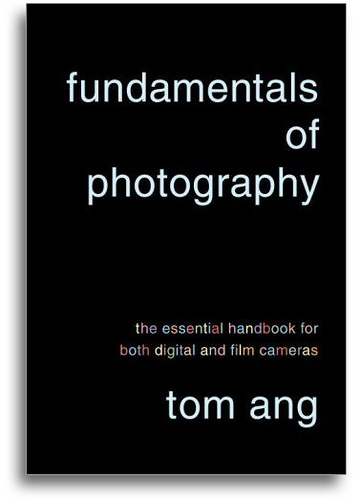April 7th, 2009
Book Review: Fundamentals of Photography by Tom Ang
Today’s guest post was written by Utah photographer and Photowalking Utah member Rhett Olson. Rhett’s photography can be seen at www.rhettolsonphotography.com.
I started photography about ten years ago while writing a book, 100 Hikes in Utah. My co-author did most of the photography during our hiking and I would watch and ask questions. He would explain how using a high f-stop and long shutter speed in the slot canyons would give him enough light and keep all the walls in focus. I soon purchased a Pentax K1000 with a 50mm lens, a load of tri-X, and had a friend show me how to develop my negatives in my sink.
Because I didn’t always have access to my photography friends to ask questions, most of my learning going forward (outside of experimentation) was done on photo.net. There, I read a little about everything. Lighting, posing, processing, printing, gear, it was all there.
When I picked up Fundamentals of Photography, it felt like the print version of my learning on the Internet, but conveniently compiled in one location. Even the book’s jacket says it’s “everything you need to know; from the most practical advice, to the most sophisticated nuances.”
Ang defines photography, then breaks down the process from manipulating the light, capturing it, then processing the image and outputting it. Each color-coded chapter is broken into logical sections that cover everything from demosaiking and in-camera processing, to controlling image tonality and color theory.
The discussion photography in the realm of both traditional film and digital make the book relevant to any photographer. Ang details the types and sizes of film (35mm, medium format, and large format) and the advantages of each. Developing, enlarging, and printing is covered as well. He also outlines a hybrid method of using both film and digital; capturing the image on film, then scanning to a digital file for processing and output.
The book itself is a sturdy paperback, built like a field guide. It contains loads of colorful images, charts, and graphs. The use of sample images to illustrate points help in the understanding of each subject.
One example of this is on page 90 where a portrait of a woman is created with multiple lighting setups. Each image is shown next to a diagram of lighting setup and a written description. This format allows the reader to quickly see changes from each lighting setup to the next.
The first reference section on page 324 is another example where Ang uses pictures and diagrams to instruct. There, he outlines the process of diagnosing processing and printing defects. The associated chart shows an image, then lists the image’s defect, it’s diagnosis, and how the defect can be corrected.
In summary, I think Fundamentals of Photography is a great reference book for photographers. It covers a breadth of topics and allows readers to easily zero in on a subject they are interested in, or are experimenting with, and learn more.
Fundamentals of Photography is available at Amazon.com.






